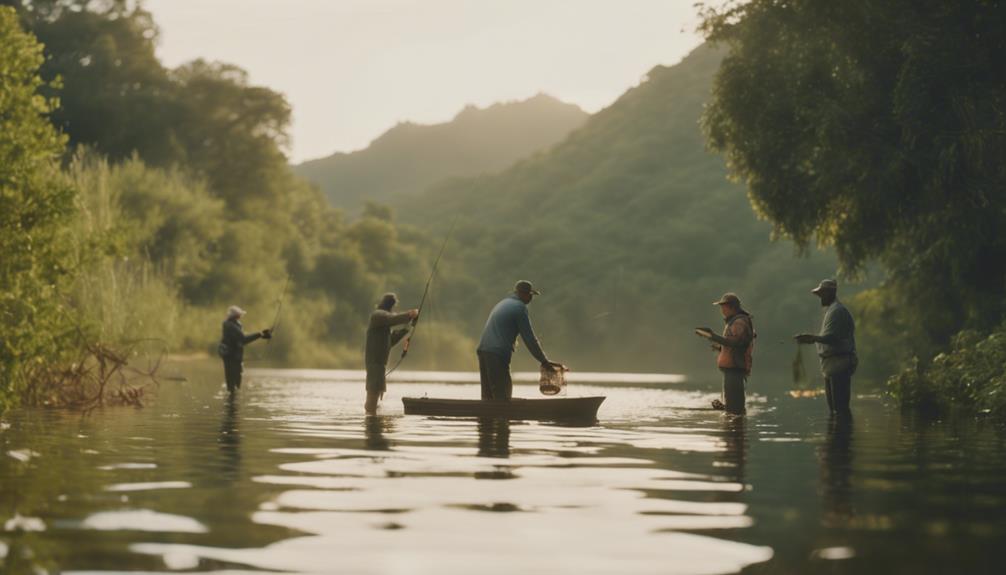Fly fishing is a beloved pastime for many anglers, and one of the most effective techniques in this sport is using fly fishing nymphs. In this comprehensive guide, we will explore everything you need to know about nymphs, from the best patterns and techniques to tips for maximizing your success on the water. Whether you’re a seasoned fly fisher or a beginner, this article will provide you with valuable insights to enhance your fishing experience.
Understanding Fly Fishing Nymphs: What Are They?
Fly fishing nymphs represent the immature stage of aquatic insects, typically found underwater before they emerge as adult flies. In many freshwater environments, fish feed heavily on nymphs, making them an indispensable part of any fly angler’s arsenal. Nymphs can imitate various species such as mayflies, stoneflies, and caddisflies, and they are often fished at different depths to match the feeding behavior of fish. Understanding the lifecycle of these insects will help you choose the right nymph patterns and improve your chances of a successful catch.
Why Nymphs Are Effective for Fly Fishing
One of the primary reasons fly fishing nymphs are so effective is that they mimic the natural food sources that fish actively seek. Unlike dry flies that float on the surface, nymphs are usually found beneath the water, where fish spend most of their time. Fish are often more willing to strike at nymphs, especially during certain times of the year when they are actively feeding on these aquatic larvae. Additionally, nymphs can be presented in various ways, allowing anglers to adapt their techniques to different fishing conditions.
Choosing the Right Nymph Patterns
When it comes to fly fishing nymphs, the right pattern can make all the difference. Popular nymph patterns include the Pheasant Tail Nymph, Hare’s Ear Nymph, and Zebra Midge. Each of these patterns imitates a specific type of aquatic insect and can be effective in various fishing scenarios. The Pheasant Tail Nymph, for instance, is excellent for imitating mayflies, while the Hare’s Ear Nymph closely resembles caddisflies. It’s crucial to select patterns that match the local insect life and to have a diverse selection in your fly box for different situations.
Essential Techniques for Nymph Fishing
To maximize your success with fly fishing nymphs, it’s important to master various techniques. One of the most effective methods is the “dead drift” technique, where the nymph is allowed to drift naturally with the current, mimicking a real insect in the water. This requires a delicate balance of line control and understanding of the water’s flow. Another technique is the “high-stick” method, which keeps the rod tip high to maintain a direct line to the nymph, allowing for better sensitivity to strikes. It’s also beneficial to learn how to read water, as fish are often located in specific areas such as seams, eddies, and under overhanging vegetation.
Reading the Water: Where to Find Fish
Understanding where to find fish is crucial when using fly fishing nymphs. Fish tend to congregate in specific areas based on various factors such as water temperature, current speed, and available food sources. Look for spots where the current slows down, as these areas often provide resting places for fish. Additionally, structures like rocks, fallen trees, and deep pools can serve as ideal hiding spots for fish. Observing the water’s surface for any signs of rising fish can also provide clues about what they are feeding on, allowing you to adjust your nymph patterns accordingly.
Seasonal Considerations for Nymph Fishing
The effectiveness of fly fishing nymphs can vary with the seasons. During the spring and fall, nymphs are particularly active, making these seasons prime time for nymph fishing. In the summer, fish may prefer to feed on emerging insects, but nymphs still play an essential role, especially during the cooler parts of the day. Winter fishing can be challenging, but using heavier nymphs that sink quickly can still yield success as fish remain near the bottom. Being aware of seasonal insect hatches and adjusting your nymph patterns accordingly will significantly improve your fishing results.
Tackle and Gear Recommendations
When fly fishing with nymphs, having the right tackle and gear is essential. A 9-foot, 5-weight fly rod is a versatile option that can handle various nymph fishing scenarios. Pair this with a matching reel and floating line for optimal performance. It’s also crucial to invest in a good selection of leaders and tippet materials, as these will affect your nymph’s presentation. Consider using a strike indicator to detect subtle takes, especially when fishing in deeper water. The right gear can make your nymph fishing experience more enjoyable and productive.
Tips for Successful Nymph Fishing
To wrap up our guide on fly fishing nymphs, here are some additional tips to enhance your success. First, pay attention to the weather and water conditions; overcast days often lead to better fishing as fish feel more secure. Always be stealthy when approaching the water, as spooking fish can ruin your chances. Don’t hesitate to experiment with different nymph patterns and techniques until you find what works best for you. Lastly, practice patience and persistence; nymph fishing can sometimes require a bit of waiting, but the rewards can be well worth it.
In conclusion, fly fishing nymphs are a vital component of any angler’s strategy. By understanding the nature of nymphs, mastering effective techniques, and selecting the right patterns, you can enhance your fishing experience and increase your chances of landing that trophy catch. Happy fishing!
